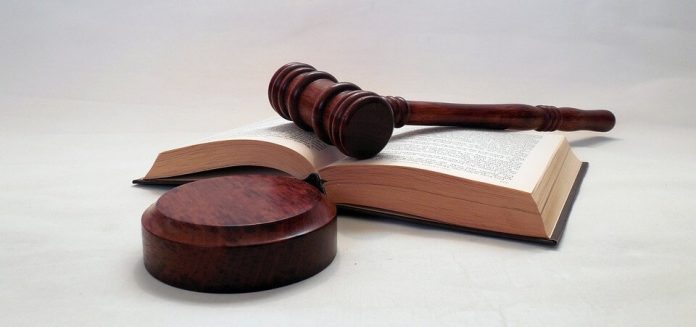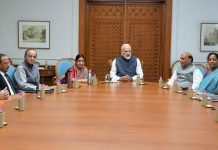This article is written by Jaya Vats, a practising advocate, Delhi. In this article, the author provides a detailed study on all the aspects related to the Legal Metrology Act, 2009. The article provides an in-depth analysis of the meaning, and applicability of the Legal Metrology Act along with its relevance.
It has been published by Rachit Garg.
Table of Contents
Introduction
The science of measuring is known as metrology. It covers theoretical and practical issues, the realisation of units of measurement and their physical representation, as well as measuring tools and their application fields. Legal metrology refers to any applied metrology that is governed by legislation or government order. The scope of legal metrology differs from nation to nation. Legal metrology in most nations involves measurements for individual financial, health, and environmental protection.
Legal metrology has applications in three major sectors, according to international practices:
- Commercial transactions,
- Measures needed to ensure the public health and human safety, and
- Industrial measurements.
Legal Metrology is a legislative department of the Department of Consumer Affairs that deals with the implementation of rules, regulations, requirements, and processes pertaining to measurement and measuring devices. The Department of Legal Metrology is part of the Government of India’s Department of Consumer Affairs, Food, and Public Distribution. It regulates the trade and import of weighing and measuring tools in India. Previously known as the Department of Weights and Measures, the Legal Metrology Act, 2009 superseded the Standards of Weights and Measures Act, 1976, as well as the Standard Weights and Measures (Enforcement) Act, 1985.
The Legal Metrology Act, 2009
The organisation of weights and measures was founded in 1958 to achieve weight and measure uniformity in conformity with international standards to ease trade and commerce.
In 1976, the Standards of Weights and Measures Act was adopted, which provided for the establishment of standards of weights and measures, as well as the regulation of inter-state trade or commerce in weights and measures and other items sold by weight, measure, or number. The Standards of Weights and Measures (Enforcement) Act, 1985 was passed in 1985 to enforce weights and measures standards set by or under the 1976 Act.
Since the fast growth of science and technology, as well as the globalisation of economies, there has been a great increase in weighing and measuring procedures, which has broadened the scope of weights and measures. The Legal Metrology Act, 2009 was enacted on 1-4-2011 with the intent of establishing weights and measures standards, regulating trade and commerce in weights and measures and other commodities sold or distributed by weight, measure, or number, and for matters connected with or incidental thereto.
Objectives of the Legal Metrology Act
The Act went into effect with the following goals:
- To govern weights and measure trade and commerce.
- To establish and enforce weight and measurement standards.
- Weights, measurements, or numbers are used to govern the manufacturing, sale, and usage of items.
- To rationalise the Indian Metric system (metre, kilogram, etc.).
Applicability of the Legal Metrology Act
Legal metrology provisions apply to the following:
- Individuals that use any weight or measure in any transaction, industrial production, or protection.
- Manufacturer, retailer, wholesaler, dealer, repairer of any weight or measure, importer, and/or packer of any weight, measure, or number-related item.
Nature of the Legal Metrology Act
The Legal Metrology Act of 2009, in particular, provides for the following:
- Weight or measure regulation used in a transaction or for protection;
- Approval of a weight or measurement model;
- Verification of stipulated weight or measurement by a government-approved testing facility;
- Specifying the qualifications of legal metrology officials appointed by the Central or State Governments;
- Exemption from weight and measure regulations for export items;
- Fees for certain services are levied;
- Nomination of a director by a corporation who will be accountable for enactment compliance;
- Penalty for offences and offences combined;
- Appeals against various agencies’ decisions; and
- Empowering the central government to create regulations for upholding the enactment’s provisions
Overview of provisions of the Legal Metrology Act
The organisation of weights and measures was founded in 1958 with the goal of achieving weight and measuring uniformity in conformity with international standards in order to ease trade and commerce.
In 1976, the Standards of Weights and Measures Act was adopted, which provided for the establishment of standards of weights and measures, as well as the regulation of inter-state trade or commerce in weights and measures and other items sold by weight, measure, or number. The Standards of Weights and Measures (Enforcement) Act, 1985 was passed in 1985 to enforce weights and measures standards set by or under the 1976 Act.
Since the fast growth of science and technology, as well as the globalisation of economies, there has been a great increase in weighing and measuring procedures, which has broadened the scope of weights and measures. The Legal Metrology Act, 2009 was enacted on 1st June 2011 with the intent of establishing weights and measures standards, regulating trade and commerce in weights and measures and other commodities sold or distributed by weight, measure, or number, and for matters connected with or incidental thereto.
Administrative mechanism of legal metrology in India
- Department of Consumer Affairs under Ministry of Consumer Affairs, Food and Public Distribution
The Department of Consumer Affairs, which is part of the Ministry of Consumer Affairs, Food and Public Distribution, is in charge of developing policies for monitoring prices, the availability of essential commodities, consumer movement in the country, and the oversight of statutory bodies such as the Bureau of Indian Standards (BIS) and weights and measures.
The Department of Consumer Affairs Weights and Measures Unit is the primary authority for dealing with the issue and is responsible for all concerns falling under the scope of the Central Government. Furthermore, it must direct, coordinate, and monitor the state enforcement apparatus’s actions.
The duty for weights and measures is divided by the Centre and the states. The Central Government is responsible for matters of national policy and other associated duties such as uniform legislation on weights and measures, technical regulations, training, precision laboratory facilities, and implementation of the International Recommendation. The state governments and Union Territory Administration are in charge of enforcing the laws daily.
- Directorate of Legal Metrology
The Directorate of Legal Metrology in each state is in charge of enforcing the Standards and Weights and Measures Act, which is essentially a three-tier organisation comprised of Inspectors of Legal Metrology at the field level, Assistant Controllers of Legal Metrology at the district level, and the Controller of Legal Metrology with four Deputy Controllers sitting at the state level. The four Regional Reference Standard Laboratories (RRSL) situated in Ahmedabad, Bhubaneswar, Bangalore, and Faridabad calibrate the legal weights and measures of the states and union territories. These labs also offer calibration services to enterprises in their respective regions. They have recognised laboratories for performing model approval testing on weights and measuring devices.
Legislations enacted by the government to regulate Legal Metrology
The Legal Metrology Act, 2009 was adopted because it became necessary for the government to merge the contents of the previous two Acts in order to eliminate anomalies and simplify the laws. It also became vital to maintain regulation realistic to the amount required to defend consumers’ interests while also keeping the sector free of unnecessary intrusion. Recognition of certain “Government-authorised Test Centres” with the authority to verify stipulated weight or measure was also necessary.
Certain Legislations enacted by the government to regulate Legal Metrology Act are as follows:
- The Legal Metrology Act, 2009
- The Legal Metrology (Packaged Commodities) Rules, 2011
- The Legal Metrology (General) Rules, 2011
- The Legal Metrology (Approval of Models) Rules, 2011
- The Legal Metrology (National Standards) Rules, 2011
- The Legal Metrology (Numeration) Rules, 2011
- The Indian Institute of Legal Metrology Rules, 2011
Important terms under the Legal Metrology Act
Under Section 2 (f) of the Act, any written, marked, stamped, printed, or graphic information adhered to or appearing on any pre-packaged item is referred to as a “label.”
Under Section 2 (k) of the Act, “Protection” is used as a reading from any weight or measure to determine any action that must be done to ensure the well-being of any human being or animal, or to protect any product, vegetation, or item, whether individually or collectively.
A pre-packaged commodity under Section 2 (l) of the Act, is placed in packaging of any type, whether sealed or not, without the presence of the customer, such that the product contained inside has a predetermined amount.
A stamp under Section 2 (t) of the Act, is a mark formed by impressing, casting, engraving, etching, branding, or affixing a pre-stressed paper seal on any weight or measure to —
- confirming that such weight or measure complies with the standard prescribed by or under this Act, or
- showing that any prior mark certifying that such weight or measure complies with the criteria set by or under this Act has been erased;
A weight or measure under Section 2 (w) of the Act, prescribed by or under this Act, including weighing or measuring equipment, is referred to as a “weight or measure.”
Standard weight or measure
Chapter II of the Act enunciates the standard weight or measure will be any weight or measure that conforms to the standard unit of such weight or measure (based on the metric system or prescribed derived units) and also conforms to the provisions of Section 7 (i.e., the physical characteristics, configuration, construction details, materials, equipment, performance, tolerances, period of re-verification, methods or procedures of tests shall be such as may be prescribed). Non-standard or unverified weights and measures are subject to seizure and forfeiture.
Appointment of the Controller and other legal metrology officers
The state government shall appoint officers under Section 14(1), but their qualifications will be set by the Central Government under Section 52(2).
Pre-packaged commodities declaration
Under Section 18 of the Act, manufacturing, packaging, selling, or importing any pre-packaged item is illegal unless it is in a standard amount and has all required disclosures. Any advertising that mentions the retail price of a packaged commodity shall also include the net quantity or number of commodities contained in the package.
Approval of model
Under Section 22 of the Act, except for cast iron, brass, bullion, or carat weight, beam scales, length measure (but not measuring tape), and capacity measures up to 20 litre capacities, any weights or measures will require model permission before manufacturing or importing.
Licence
Under Section 23 of the Act, without a licence from the Controller of Legal Metrology, no one may produce, sell, or repair any weight or measure. A licensee is expected to keep proper records and registers. He must also present the records and registrations during the examination.
Weights and measures verification
Before using any weights or measures in a transaction, they should be validated. The Central Government will specify the weights and measurements that must be verified by Government Approved Test Centres. The Central/State Governments will notify the Test Centres.
Offences added together
On payment of a predetermined price, certain offences may be compounded before or after the commencement of a prosecution. No offence can be compounded if the offender committed the same or comparable offence within three years of the date of the first offence that was compounded.
Recent developments with respect to the Legal Metrology Act
Any person who uses a weight or measure in a transaction or for protection must provide the weight or measure for verification at the following locations:
- At the legal metrology officer’s office at the state of manufacturing, state of import, or place of installation.
- The legal metrology official in the state where the weight or measure is used must re-verify and stamp it at regular intervals.
- Weights and measurements that are utilised by industries for internal purposes and do not influence the quantity given to the customer do not need to be re-verified.
- Declarations are essential for all web portals.
- If a package includes a commodity, ‘Best before’ or ‘Use by Date, Month, and Year’ must be marked.
Offences under the Legal Metrology Act
Certain offences covered by the Legal Metrology Act, 2009 are as follows:
Compounding offences
Section 48 of the Act states that certain acts may be compounded either before or after the commencement of a prosecution for a fee. However, no offence can be compounded if the offender had previously committed the same or a comparable offence within three years of the date of the first offence that was compounded.
Offences by companies
Under Section 49 of the Act, a firm may appoint someone to be in charge of the company’s operations. Any such nomination should be reported to the Director of Legal Metrology or the appropriate Controller. The nominated individual and the firm shall be held liable for any violations of the Act’s requirements. When no one is nominated, the person in control or responsible for the firm is held accountable. Even if a person is nominated, any other person who is responsible to the firm and whose cooperation or negligence resulted in the violation will be held culpable for any crime committed. When a firm is convicted, the court may order that its name and the nature of the offence be published in newspapers at the company’s expense.
Penalties under the Legal Metrology Act
The Act’s offences and penalties are outlined in Chapter V:
Section 27 of the Act states that the manufacturing or sale of non-standard weights or measures is punished by a fine of up to 20,000 rupees for the first offence, imprisonment for up to three years for the second or subsequent offence, or both.
Section 36(1) of the Act allows for a punishment of up to twenty-five thousand rupees for the first crime, a fine of up to fifty thousand rupees for the second offence, and a fine of up to one lakh rupees for the third violation.
Section 36(2) of the Act allows for a penalty if a pre-packaged item is manufactured, packed, or imported with an error in net quantity as stipulated. The punishment may consist of a fine of not less than ten thousand rupees but not exceeding one lakh rupees, imprisonment for a term not exceeding one year, or both.
Section 38 of the Act establishes a penalty for non-registration of weights and measures by importers. The offence is punished by a fine of up to twenty-five thousand rupees, and for the second consecutive offence, by imprisonment for a term of up to six months, or by fine, or by both.
Section 32 of the Act imposes a penalty on the commodity’s maker, packer, or importer for failure to register under the Rules’ requirements or for violating any other rule.
Appeal under the Legal Metrology Act
Under Section 50 of the Act, Appeals may be lodged to the next higher authority within 60 days after the date of the order or decision by an officer of legal metrology.
Benefits under the Legal Metrology Act
Measurement is critical in trading processes. The need for efficient commerce is visible, resulting in a balance between traders and consumers.
- Lowers transaction costs: Revising faulty measuring techniques is often expensive and time-consuming. They have an impact on both enterprises and consumers. Initiating legal action against a trader who has the chutzpah to violate measuring regulations is also costly. However, when measures are taken precisely and correctly, following all of the requirements of the Legal Metrology Act, it saves money and time.
- The supporting trade: Legal Metrology Act is in charge of policing any illegal or unfair trade activities. This Act strives to ensure that measuring devices are in good working order and can fulfil their intended function while meeting international standards.
- Obtaining government funds: The government generates money through excise fees paid on goods manufactured, sold, imported, and exported, as well as measurement taxes. The Legal Metrology Act assures that no injustice is done to both the government and businesses when it comes to tax collection. The deal by a percentage of mass commodities may be a significant amount of both export and national pay, particularly in things such as wood, rice, coffee, palm oil, coal, iron-mineral, gold, jewels, and natural gas.
- Reduces trade technical barriers: The Legal Metrology Act decreases the burden of technical impediments while promoting measuring confidence and clarity. Fewer obstacles boost national morale and encourage people to engage in the global commerce system, which boosts national economic progress. A merchant can eliminate unnecessary hurdles in the process of adopting and applying technical laws, standards, and conformity assessment procedures by using the Legal Metrology Act.
- Increase consumer trust: When a consumer learns they are receiving a product that has been validated according to particular norms and regulations, it increases their faith in the businessman, ultimately leading to a successful trading connection.
Conclusion
The Legal Metrology Act of 2009 is the primary piece of legislation dealing with Legal Metrology law. Legal Metrology legislation establishes standards for weighing, measuring, and measuring devices. It safeguards consumers, the environment, and traders, and is particularly concerned with fair trade in India. It is based on the capacity to track measurements and measuring tools. It tries to instil trust in customers, the government, business people, and merchants. It regulates unfair trade practices.
FAQs
- How can I register with Legal Metrology?
Importers of measuring instruments who compete for business in the Indian market must register to get the Certificate of Registration of Importer of Weights and Measures. The applicant must file a registration application in Schedule X under Rule 15 and get it under Section 19 of the Legal Metrology Act 2009.
- Is it possible to transfer the licence obtained under the Legal Metrology Act?
No, it possible to transfer the licence obtained under the Legal Metrology Act
- Is it required to show the verification certificate?
Every certificate of verification granted under the Act should be displayed prominently on-premises where such weights or measures are being, or are intended to be, or are likely to be used in any transaction or for protection.
- How can a customer tell if weight or measurement is standard or not?
Each weight and measure is manufactured in accordance with the specifications and models developed by the Government of India. Weights and measurements used by dealers are validated and approved by the Legal Metrology Department Inspector, after appropriate confirmation, with a seal to ensure the honesty of the stamp of Inspector and quarter where it is certified.
References
- http://iiaonline.in/doc_files/Legal%20Metrology%20Rules%202011.pdf
- https://www.lawrbit.com/article/legal-metrology-act-2009/
- https://ssrana.in/articles/5-things-which-you-did-not-know-would-fall-under-the-legal-metrology-act/
- https://taxguru.in/corporate-law/legal-metrology-act-rules-licensing-requirements.html
- https://www.mondaq.com/india/commoditiesderivativesstock-exchanges/875818/the-legal-metrology-laws
- https://corpbiz.io/legal-metrology-act-registration
- https://corpbiz.io/learning/legal-metrology-laws-in-india/
- https://www.lawyersclubindia.com/articles/brief-overview-of-legal-metrology-laws-6056.asp
Students of Lawsikho courses regularly produce writing assignments and work on practical exercises as a part of their coursework and develop themselves in real-life practical skills.
LawSikho has created a telegram group for exchanging legal knowledge, referrals, and various opportunities. You can click on this link and join:
Follow us on Instagram and subscribe to our YouTube channel for more amazing legal content.
 Serato DJ Crack 2025Serato DJ PRO Crack
Serato DJ Crack 2025Serato DJ PRO Crack











 Allow notifications
Allow notifications



